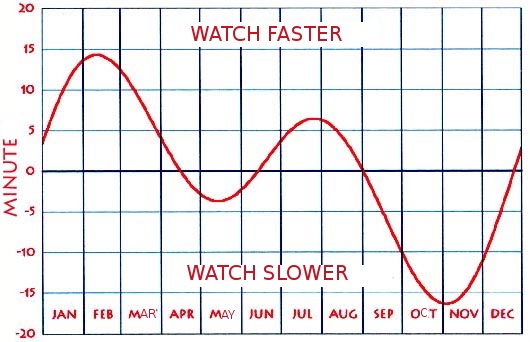What things you discovered on your own, that is actually already known and named for a long time? For example, you observe a phenomenon, you write it down, but didn’t look it up further for lack of words. Years later, you chance upon the exact same thing on Wikipedia.
Preface
My entries are from my school days. This would be quite weird for post-internet people, but there was a time when the Internet is harder to come by.
Libraries existed, but I for one always get overwhelmed by the sheer number of things on the shelves. It gave me sensory overload. But I still discount the possibility of me finding out about the following from just browsing a school library. You kinda need to already know what you’re looking for in libraries, and I’m the type to browse around. Libraries just don’t work for me.
So what I discovered below might already be in the library books, but the books and me are never destined to cross paths.
1. Equation of time
I noticed the way muslim prayer times (aka sunrise and sunset times) drifts throughout the year. It goes up in time, then down, then up, then down again. I plotted the times from the prayer timetable in calendars. It formed this kind of curve:

I thought it’s just the seasons making the days longer and shorter, but that can’t be it, all points of solar time (sunrise, noon, sunset) also shifts the same way at roughly the same amount.
Later on I learned it’s the equation of time. It correlates really well with the prayer times (sunrise and sunset times) on the calendar because we’re really close to the equator and seasonal variance plays little role, so it rules out my schoolboy self’s hypothesis from years ago.
This is not taught in neither science nor religious studies because, of course. And also because clocks ticking at a constant rate wasn’t a thing for most of history.
2. Bezier curve
You know the mathematics notebooks with the squares? I used to draw this pattern, connecting the dots on the pages. I thought it looked cool.

Sometime later, I was reading about Bezier curves and it occurred to me years ago that I did something similar with it back then.
My parents and relatives are living month after month, year after year, remarking how the prayer times had come sooner/later, never realizing what caused it, and how it’s the exact same pattern every Gregorian year i.e. Muslim prayer times ironically correlates to Gregorian dates.
This is not taught in neither science nor religious studies because, of course. And also because clocks ticking at a constant rate wasn’t a thing for most of history.
if you’re talking about the entirety of history, you’d be surprised to find out Chinese people fked around with astronomy more than 2000+ years ago and were able to predict solar, lunar and planetary motions, knowing there’s 24 hours in a day, and 365 1/4 days per year without even knowing clock existed lol.
knowing there’s 24 hours in a day
this is not what i meant by “clocks ticking at a constant rate”.
a day is not exactly 86400 seconds long. it’s ever so slightly faster or slower depending on where the earth is in its orbit. this is what equation of time exists to explain. it took until science and technology is advanced enough to measure time precisely over years to know such variances even exist. it also took time until society switched from using solar time to fixed clock time for it to start to matter that solar time (prayer times) now drifts back and forth over the course of a year.
this is wrong.
It’s like saying Newton’s gravity of Law is wrong because Einstein disproved it lol. It’s just an ancient finding that’s still true for the most part 2000+ years later.
this is exactly what I’m referring to by “clocks ticking at a constant rate”.
were able to predict solar, lunar and planetary motions, knowing there’s 24 hours in a day
Got you. But it’s implied that they have already figured out irregular daily movement of the sun. if they could predict sun and the moon they would have known about the discrepancy of the sunrise and sunset throughout the year. as you have mentioned it yourself, equation of time simply explains this occurrence, but to observe said occurrence doesn’t require you to compute it with advanced knowledge.
If i had to guess Chinese had to use other unit measurements like candle and what not, it would not be seconds but whatever unit measurement of time they came out with would be accurate for that time period.
In middle school, I created a mathematical formula to calculate how many unique handshakes exist with a given number of people.
Absolutely fucking useless but worked.
This is REALLY silly but that would be me making the absolutely unsurprising connection (to academics) between Russian and Sanskrit because I was trying to learn basic Russian and learning their word for man is basically distant cousins along the language tree to the Malay “manusia”.
Anyway out of that I learned that the etymology of punch comes from the Slavic languages’ word for five (because five fingers = a whole dang fist) which is of course related to Sanskrit as well and survives in Malay in words like “pancaindera”
Sekian terima kasih.
Germanic, Greek, Latin, Romance, Slavic, Indic; all these languages ultimately are descendants of an ancestral language linguists call the Proto-Indo-European.
english goose == German gans == sanskrit gansa == malay angsa
Yup!! For some reason I never situated Russian and Ukrainian in the family tree lmao
Still haven’t found a bed sheet that is basically a giant pillow case. It would be easier then the diaper sheets that curl off the dam bed



